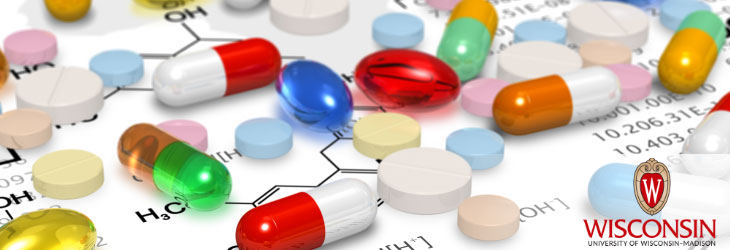Therapeutics & Vaccines

Provoking Anti-Tumor Immune Response with Rhamnose
WARF: P120290US02
Inventors: Laura Kiessling, Rachael Sheridan, Jonathan Hudon
The Wisconsin Alumni Research Foundation (WARF) is seeking commercial partners interested in developing a method for treating melanoma and other cancers using rhamnose antigen-lipid conjugates to recruit antibodies.
Overview
One promising approach to cancer treatment is to leverage the immune system. Specifically, tumors can be ‘tagged’ with foreign antigens that attract the body’s defensive antibodies. The antibodies will bind to the tagged tumor cells and kill them.
This tactic requires (1) a suitable antigen to recruit antibodies and (2) a method to tag the tumor cells. The antigen Gal-α-1,3-Gal (herein called αGal) is recognized as having these properties. This carbohydrate is present throughout nature with the notable exception of humans and some other primates. As such, humans are frequently exposed to αGal and develop a strong immune response against it. In studies, αGal derived from rabbit blood has been shown to successfully tag melanoma cells for immune destruction.
Recently, a carbohydrate called rhamnose has been identified as a promising alternative. Rhamnose is a much smaller molecule and can be chemically synthesized without using animals. Also, anti-rhamnose antibodies were found to be more abundant than anti-αGal antibodies in humans. Such advantages could make rhamnose an exciting new weapon against cancer.
This tactic requires (1) a suitable antigen to recruit antibodies and (2) a method to tag the tumor cells. The antigen Gal-α-1,3-Gal (herein called αGal) is recognized as having these properties. This carbohydrate is present throughout nature with the notable exception of humans and some other primates. As such, humans are frequently exposed to αGal and develop a strong immune response against it. In studies, αGal derived from rabbit blood has been shown to successfully tag melanoma cells for immune destruction.
Recently, a carbohydrate called rhamnose has been identified as a promising alternative. Rhamnose is a much smaller molecule and can be chemically synthesized without using animals. Also, anti-rhamnose antibodies were found to be more abundant than anti-αGal antibodies in humans. Such advantages could make rhamnose an exciting new weapon against cancer.
The Invention
UW–Madison researchers have developed L-rhamnose antigen-lipid conjugates for provoking anti-tumor immune responses in humans and other animals. The conjugates can be inserted into tumor cell membranes where they attract cancer-fighting cytotoxic T cells.
The conjugates contain at least two L-rhamnose moieties connected to a lipid (such as DPoPE) via a standard linker. They are structured to invade tumor cell membranes and display antigen on the cell surface. The new conjugates could be combined with other chemotherapeutic agents and administered as a pharmaceutical injection or ointment.
The conjugates contain at least two L-rhamnose moieties connected to a lipid (such as DPoPE) via a standard linker. They are structured to invade tumor cell membranes and display antigen on the cell surface. The new conjugates could be combined with other chemotherapeutic agents and administered as a pharmaceutical injection or ointment.
Applications
- Immunotherapy to fight melanoma and other cancers
Key Benefits
- Antibody response to rhamnose is much stronger than to αGal.
- Conjugates are well-defined, well-characterized and free of animal contamination.
- Synthesized using standard methods
- L-rhamnose and related antigens are commercially available and easy to manipulate.
Stage of Development
The conjugates have been shown to be effective in promoting immunotherapeutic cell death in an in vitro assay. Preliminary experiments killed about 90 percent of targeted M21 melanoma cells.
Tech Fields
For current licensing status, please contact Rafael Diaz at [javascript protected email address] or 608-960-9847